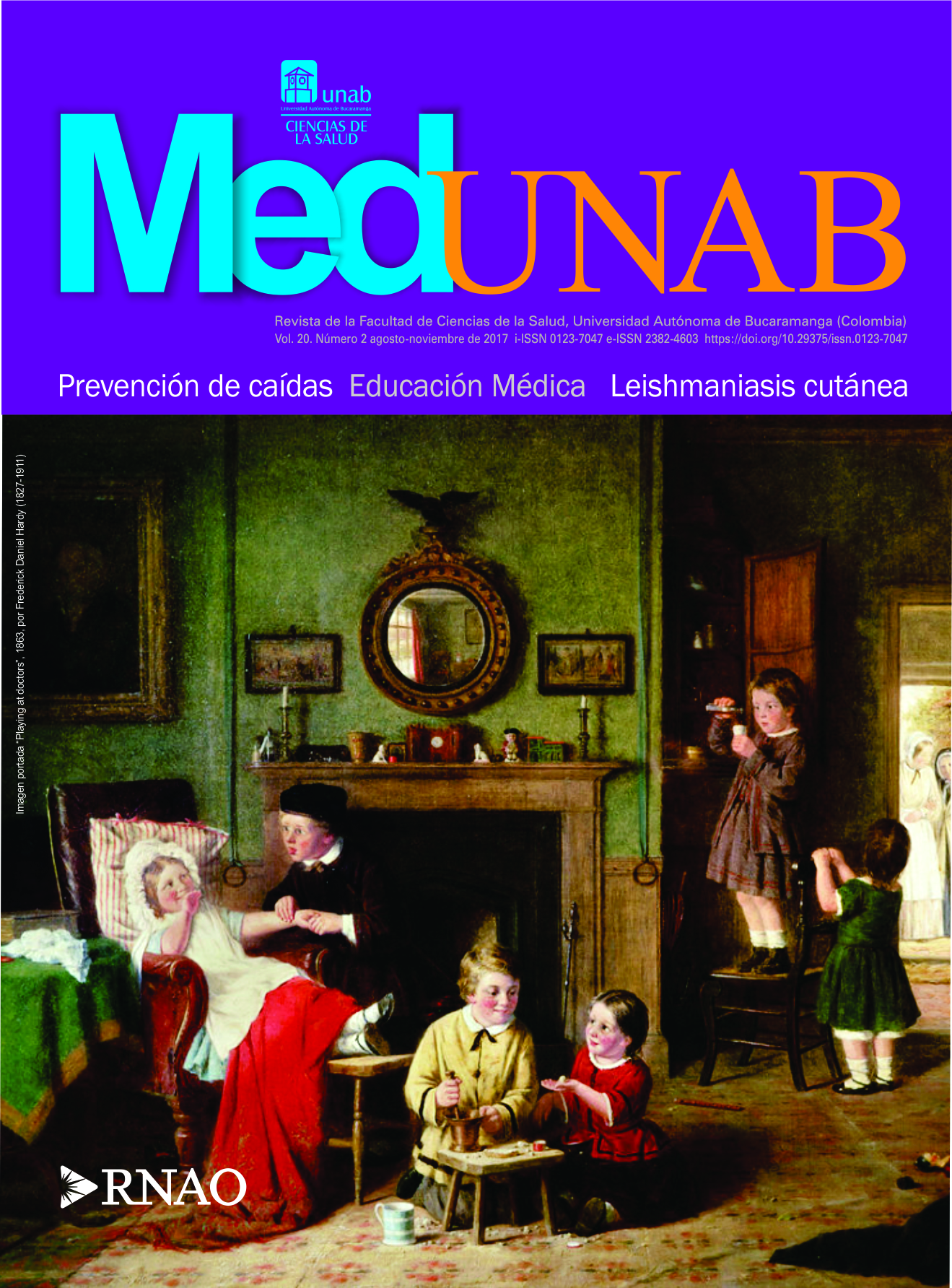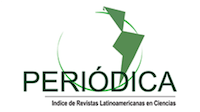Prevención de la infección por Streptococcus del grupo B en gestantes
Resumen
Introducción: La infección neonatal por Streptococcus del Grupo B en mujeres gestantes es un problema creciente a nivel mundial y tiene múltiples consecuencias para el recién nacido, su prevención impacta directamente la morbi-mortalidad neonatal. Objetivo: Brindar al lector información relevante sobre la importancia clínica, nuevos métodos de tamizaje y formas de prevención de la infección por Streptococcus del Grupo B en gestantes, que será de utilidad para evitar complicaciones del binomio materno-fetal. Metodología: En esta revisión de la literatura, se estudiaron 53 artículos, abordando evidencia tanto en el ámbito local e internacional, utilizando las bases de datos PubMed, ScienceDirect y Google Scholar, dentro los criterios de búsqueda se tuvo en cuenta el año de publicación, incluyendo artículos que fueron publicados a partir del año 2011. Resultados: La comunidad internacional ha desarrollado guías y planes de prevención; en la actualidad, para una profilaxis y prevención adecuada se proponen diversos métodos, partiendo del tamizaje para las maternas, uso de antibióticos durante el embarazo y parto, además del desarrollo de vacunas maternas para prevenir infecciones. Conclusiones: La colonización por Streptococcus del Grupo B en gestantes y el riesgo que conlleva para el recién nacido y su madre, exige una constante actualización en técnicas de tamizaje, prevención y manejo. Numerosos avances en estos campos vienen llevándose a cabo en los últimos años y su fortalecimiento y desarrollo será clave para impactar positivamente la morbi-mortalidad materno-fetal. [Martínez-Sánchez LM, Restrepo-Arango M, Sánchez-Díaz E, Marín-Cárdenas JS, Gallego-González D, Vélez-Peláez MC. Prevención de la infección por Streptococcus del grupo B en gestantes. MedUNAB 2017; 20(2): 182-189].
Referencias bibliográficas
2. Chan GJ, Lee AC, Baqui AH, Tan J, Black RE. Risk of early-onset neonatal infection with maternal infection or colonization: a global systematic review and meta-analysis. PLoS Med. 2013; 10(8):e1001502. Disponible en: http://www.ncbi.nlm.nih.gov/pubmed/23976885
3. Ohlsson A, Shah VS. Intrapartum antibiotics for known maternal Group B streptococcal colonization. Cochrane Database Syst Rev. 2013; 3:CD007467. Disponible en: http://www.ncbi.nlm.nih.gov/pubmed/23440815
4. Faro J. More rapid testing group B streptococcus detection. MLO Med Lab Obs. 2013; 45(6):15. Disponible en: http://www.ncbi.nlm.nih.gov/pubmed/23875438
5. Baker CJ. The spectrum of perinatal group B streptococcal disease. Vaccine. 2013; 31 Suppl 4:D3-6. Disponible en: http://goo.gl/ZYboLp .
6. Kruk CR, Feuerschuette OH, da Silveira SK, Cordazo M, Trapani Júnior A. Epidemiologic profile of Streptococcus agalactiae colonization in pregnant women attending prenatal care in a city of southern of Brazil. Braz J Infect Dis. 2013; 17(6):722-3. Disponible en: http://goo.gl/zvnqtN .
7. Page-Ramsey SM, Johnstone SK, Kim D, Ramsey PS. Prevalence of group B Streptococcus colonization in subsequent pregnancies of group B Streptococcus-colonized versus noncolonized women. Am J Perinatol. 2012; 30(5):383-8. Disponible en: http://goo.gl/9XEpWm .
8. Berardi A, Rossi C, Creti R, China M, Gherardi G, Venturelli C, et al. Group B streptococcal colonization in 160 mother-baby pairs: a prospective cohort study. J Pediatr. 2013; 163(4):1099-104. Disponible en: http://goo.gl/wJ1hGA .
9. Oh W. Early onset neonatal group B streptococcal sepsis. Am J Perinatol. 2013; 30(2):143-7. Disponible en: http://www.ncbi.nlm.nih.gov/pubmed/23322392 .
10. Brzychczy-Wloch M, Wojkowska-Mach J, Helwich E, Heczko PB. Incidence of maternal SGB colonization and neonatal SGB disease among very low birth weight Polish neonates. Med Sci Monit. 2014; 19:34-9. Disponible en: http://goo.gl/IjA2rb .
11. Berardi A, Rossi C, Lugli L, Creti R, Bacchi ML, Lanari M, et al. SGB Prevention Working Group, Emilia-Romagna. Group B streptococcus late-onset disease: 2003-2010. Pediatrics. 2013; 131(2):e361-8. Disponible en: http://goo.gl/b1o0l6.
12. Park JS, Cho DH, Yang JH, Kim MY, Shin SM, Kim EC, et al. Usefulness of a rapid real-time PCR assay in prenatal screening for group B streptococcus colonization. Ann Lab Med. 2013; 33(1):39-44. Disponible en: http://goo.gl/4CQmKm .
13. Yancey MK, Schuchat A, Brown LK, Ventura VL, Markenson GR. The accuracy of late antenatal screening cultures in predicting genital group B streptococcal colonization at delivery. Obstet Gynecol. 1996; 88:811-5.
14. Verani J, McGee L, Schrag S. Prevention of perinatal group B streptococcal disease, 2010. MMWR Recomm Rep. 2010; 59:1-36.
15. Sheehy A, Davis D, Homer CS. Assisting women to make informed choices about screening for Group B Streptococcus in pregnancy: a critical review of the evidence. Women Birth. 2013; 26(2):152-7. Disponible en: http://goo.gl/DqzOZc
16. Guerrero C, Martinez J, Menasalvas A, Blazquez R, Rodriguez T, Segovia M. Use of direct latex agglutination testing of selective broth in the detection of group B streptococcal carriage in pregnant women. Eur J Clin Microbiol Infect Dis. 2004; 23:61-2.
17. Bourgeois-Nicolaos N, Cordier AG, Guillet-Caruba C, Casanova F, Benachi A, Doucet-Populaire F. Evaluation of the Cepheid Xpert SGB assay for rapid detection of group B Streptococci in amniotic fluids from pregnant women with premature rupture of membranes. J Clin Microbiol. 2013; 51(4):1305-6. Disponible en: http://goo.gl/VAE9Qi
18. Faro JP, Bishop K, Riddle G, Ramirez MM, Katz AR, Turrentine MA, et al. Accuracy of an accelerated, culture-based assay for detection of group B streptococcus. Infect Dis Obstet Gynecol. 2013; 2013:367935. Disponible en : http://goo.gl/G0TPd7 .
19. Poncelet-Jasserand E, Forges F, Varlet MN, Chauleur C, Seffert P, Siani C, et al. Reduction of the use of antimicrobial drugs following the rapid detection of Streptococcus agalactiae in the vagina at delivery by real-time PCR assay. BJOG. 2013; 120(9):1098-108. Disponible en: http://www.ncbi.nlm.nih.gov/pubmed/23656626
20. Berg BR, Houseman JL, Garrasi MA, Young CL, Newton DW. Culture-based method with performance comparable to that of PCR-based methods for detection of group B Streptococcus in screening samples from pregnant women. J Clin Microbiol. 2013; 51(4):1253-5. Disponible en: http://goo.gl/NimCEG .
21. Burns G, Plumb J. GBS public awareness, advocacy, and prevention--what's working, what's not and why we need a maternal GBS vaccine. Vaccine. 2013; 31, Suppl 4:D58-65. Disponible en: http://goo.gl/YR6MKq
22. Horváth B, Grasselly M, Bödecs T, Boncz I, Bódis J. Screening pregnant women for group B streptococcus infection between 30 and 32weeks of pregnancy in a population at high risk for premature birth. Int J Gynaecol Obstetl. 2013; 122(1):9-12. Disponible en: http://goo.gl/IZW7I5 .
23. Kimura K, Matsubara K, Yamamoto G, Shibayama K, Arakawa Y. Active screening of group B streptococci with reduced penicillin susceptibility and altered serotype distribution isolated from pregnant women in Kobe, Japan. Jpn J Infect Dis. 2013; 66(2):158-60. Disponible en: http://goo.gl/OPsblL
24. Capanna F, Emonet SP, Cherkaoui A, Irion O, Schrenzel J, Martinez de Tejada B. Antibiotic resistance patterns among group B Streptococcus isolates: implications for antibiotic prophylaxis for early-onset neonatal sepsis. Swiss Med Wkly. 2013; 25:143. Disponible en: http://goo.gl/QZR8kT .
25. Duque CM, Gómez B, Sánchez DM , Uribe OL. Perfil de sensibilidad de S. agalactiae obtenido a partir de muestras de introito vaginal y región perineal de mujeres gestantes de Medellín (Colombia). NOVA. Publicación Científica EN CIENCIAS BIOMÉDICAS. 2011; 9(15): Disponible en: http://www.unicolmayor.edu.co/invest_nova/NOVA/NOVA15_ARTORIG2_PERFIL.pdf.
26. Crespo-Ortiz Mdel P, Castañeda-Ramirez CR, Recalde-Bolaños M, Vélez-Londoño JD. Emerging trends in invasive and noninvasive isolates of Streptococcus agalactiae in a Latin American hospital: a 17-year study. BMC Infect Dis. 2014; 14:428. Disponible en: http://www.ncbi.nlm.nih.gov/pubmed/25086463
27. Megged O, Assous M, Weinberg G, Schlesinger Y. Inducible clindamycin resistance in β-hemolytic streptococci and Streptococcus pneumoniae. Isr Med Assoc J. 2013; 15(1):27-30. Disponible en: http://www.ncbi.nlm.nih.gov/pubmed/23484235
28. Paccione KA, Wiesenfeld HC. Guideline adherence for intrapartum group B streptococci prophylaxis in penicillin-allergic patients. Infect Dis Obstet Gynecol. 2013; 2013:917304. Disponible en: http://goo.gl/v575Tv
29. Simons FE, Schatz M. Anaphylaxis during pregnancy. J Allergy Clin Immunol. 2013; 130(3):597-606. Disponible en: http://goo.gl/ppJ1Uc .
30. Faro J, Katz A, Ramirez M, Turrentine M, Bishop K, Riddle G, et al. Rapid test for growth and determination of antibiotic sensitivity of Group B Streptococcus (SGB) in antepartum women. Am J Obstet Gynecol. 2012; 206(1): S268. Disponible en: http://goo.gl/YjP1qU .
31. Fairlie T, Zell ER, Schrag S. Effectiveness of intrapartum antibiotic prophylaxis for prevention of early-onset group B streptococcal disease. Obstet Gynecol. 2013; 121(3):570-7. Disponible en: http://goo.gl/7BPqcz .
32. Turrentine MA, Greisinger AJ, Brown KS, Wehmanen OA, Mouzoon ME. Duration of intrapartum antibiotics for group B streptococcus on the diagnosis of clinical neonatal sepsis. Infect Dis Obstet Gynecol. 2013; 2013:525878. Disponible en: http://goo.gl/FdD7f8
33. Schrag SJ, Verani JR. Intrapartum antibiotic prophylaxis for the prevention of perinatal group B streptococcal disease: experience in the United States and implications for a potential group B streptococcal vaccine. Vaccine. 2013; 28:31. Disponible en: http://goo.gl/2JyCYi .
34. Centers for Disease Control and Prevention. Prevention of Perinatal Group B Streptococcal Disease Revised Guidelines from CDC, 2010. Disponible en : http://www.cdc.gov/groupbstrep/guidelines
35. Bromiker R, Ernest N, Meir MB, Kaplan M, Hammerman C, Schimmel MS, et al . Correlation of bacterial type and antibiotic sensitivity with maternal antibiotic exposure in early-onset neonatal sepsis. Neonatology. 2013;103(1):48-53. Disponible en : http://goo.gl/Wab4ra .
36. Natale F, Brunelli R, Bizzarri B, Castronovo A, De Curtis M. Cervical insufficiency: a new issue for guidelines on prevention of perinatal group B streptococcal disease? Pediatrics. 2013; 131(2):e612-5. Disponible en: http://goo.gl/7NqJ5J .
37. Swamy GK, Garcia-Putnam R. Vaccine-preventable diseases in pregnancy. Am J Perinatol. 2013; 30(2):89-97. Disponible en: http://goo.gl/KRG4ed .
38. Esposito S, Bosis S, Morlacchi L, Baggi E, Sabatini C, Principi N. Can infants be protected by means of maternal vaccination? Clin Microbiol Infect. 2012; 18 Suppl 5:85-92. Disponible en: http://goo.gl/TSKpRR .
39. Lindsey B, Kampmann B, Jones C. Maternal immunization as a strategy to decrease susceptibility to infection in newborn infants. Curr Opin Infect Dis. 2013; 26(3):248-53. Disponible en: http://goo.gl/zQfS32 .
40. Melin P, Efstratiou A. Group B streptococcal epidemiology and vaccine needs in developed countries. Vaccine. 2013; 28;31 Suppl 4:D31-42. Disponible en: http://goo.gl/hGvBTZ
41. Kasper DL, Paoletti LC, Wessels MR, Guttormsen HK, Carey VJ, Jennings HJ, Baker CJ. Immune response to type III group B streptococcal polysaccharide-tetanus toxoid conjugate vaccine. J Clin Invest. 1996; 98(10). Disponible en : http://www.ncbi.nlm.nih.gov/pmc/articles/PMC507681/
42. Madhi SA, Dangor Z, Heath PT, Schrag S, Izu A, Sobanjo-Ter Meulen A, et al . Considerations for a phase-III trial to evaluate a group B Streptococcus polysaccharide-protein conjugate vaccine in pregnant women for the prevention of early- and late-onset invasive disease in young-infants. Vaccine. 2013; 28;31 Suppl 4:D52-7. Disponible en: http://goo.gl/UWMwP9 .
43. Munoz FM, Ferrieri P. Group B Streptococcus vaccination in pregnancy: moving toward a global maternal immunization program. Vaccine. 2013; 28;31 Suppl 4:D46-5. Disponible en: http://goo.gl/a9u4sc .
44. Souza VC, Kegele FC, Souza SR, Neves FP, de Paula GR, Barros RR. Antimicrobial susceptibility and genetic diversity of Streptococcus agalactiae recovered from newborns and pregnant women in Brazil. Scand J Infect Dis. 2013; 45(10):780-5. Disponible en: http://goo.gl/IwMHaR
45. Bellais S, Six A, Fouet A, Longo M, Dmytruk N, Glaser P, Trieu-Cuot P, Poyart C. Capsular switching in group B Streptococcus CC17 hypervirulent clone: a future challenge for polysaccharide vaccine development. J Infect Dis. 2012; 206(11):1745-52. Disponible en: http://goo.gl/YPFksR .
46. Brzychczy-Wloch M, Gorska S, Brzozowska E, Gamian A, Heczko PB, Bulanda M. Identification of high immunoreactive proteins from Streptococcus agalactiae isolates recognized by human serum antibodies. FEMS Microbiol Lett. 2013; 349(1):61-70. Disponible en: http://goo.gl/E75eda .
47. Chen VL, Avci FY, Kasper DL. A maternal vaccine against group B Streptococcus: past, present, and future. Vaccine. 2013; 31 Suppl 4:D13-9. Disponible en: http://goo.gl/ifcr2B .
48. Edwards MS, Gonik B. Preventing the broad spectrum of perinatal morbidity and mortality through group B streptococcal vaccination. Vaccine. 2013; 31Suppl 4:D66-71. Disponible en: http://goo.gl/CCZm1q
49. Edwards MS, Lane HJ, Hillier SL, Rench MA, Baker CJ. Persistence of functional antibodies to group B streptococcal capsular polysaccharides following immunization with glycoconjugate vaccines. Vaccine. 2013; 30(28):4123-6. Disponible en: http://goo.gl/b5q2ff
50. Le Doare K, Heath PT. An overview of global GBS epidemiology. Vaccine. 2013; 31 Suppl 4:D7-12. Disponible en: http://goo.gl/tnjV00 .
51. Koumans EH, Rosen J, van Dyke MK, Zell E, Phares CR, Taylor A,et al . Prevention of mother-to-child transmission of infections during pregnancy: implementation of recommended interventions, United States, 2003-2004. Am J Obstet Gynecol. 2012; 206(2):158.e1-158.e11. Disponible en: http://goo.gl/rdsoIo .
52. Johri AK, Lata H, Yadav P, Dua M, Yang Y, Xu X, et al. Epidemiology of Group B Streptococcus in developing countries. Vaccine. 2013; 31 Suppl 4:D43-5. Disponible en: http://goo.gl/ucTuO5
53. Dagnew AF, Cunnington MC, Dube Q, Edwards MS, French N, Heyderman RS,et al. Variation in reported neonatal group B streptococcal disease incidence in developing countries. Clin Infect Dis.2012; 55(1):91-102. Disponible en: http://goo.gl/tPJvkI .
Descargas
| Estadísticas de artículo | |
|---|---|
| Vistas de resúmenes | |
| Vistas de PDF | |
| Descargas de PDF | |
| Vistas de HTML | |
| Otras vistas | |
































